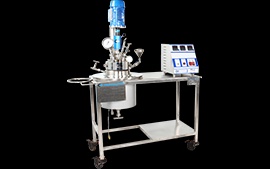In the realm of medical, laboratory, and industrial settings, there exists a silent hero known as the autoclave. It's a device that may not often find itself in the spotlight, but its role in ensuring safety, quality, and the advancement of science is paramount. In this blog post, we'll delve into the world of autoclaves, exploring their functions, applications, and significance in various fields.
What is an Autoclave?
At its core, an autoclave is a pressurized vessel that uses high temperature and steam to sterilize equipment and other objects. This ingenious device was first developed in the late 19th century and has since become an indispensable tool in a wide range of industries.
The Sterilization Process
The primary purpose of an autoclave is to sterilize items by eliminating all forms of microbial life, including bacteria, viruses, and spores. It does this through a combination of high temperature and pressure. Here's a simplified breakdown of the sterilization process:
-
Preparation: Items to be sterilized are loaded into the autoclave chamber. It's crucial to ensure that they are properly arranged and not overcrowded to allow for effective steam penetration.
-
Sealing: The autoclave chamber is sealed tightly to prevent the escape of steam and maintain the desired pressure.
-
Pressure Buildup: Steam is introduced into the chamber, and the pressure is gradually increased. This elevated pressure, typically around 15-20 psi (pounds per square inch), raises the boiling point of water from 100°C (212°F) to about 121-134°C (250-273°F), depending on the pressure setting.
-
Sterilization: The high-temperature steam effectively kills or deactivates microorganisms present on the items being sterilized. This process usually lasts for 15-20 minutes.
-
Cooling: After sterilization, the autoclave is depressurized, and the items are allowed to cool before they can be safely removed.
Applications of Autoclaves
-
Medical and Healthcare: Autoclaves are the backbone of infection control in healthcare facilities. They are used to sterilize surgical instruments, laboratory equipment, and even dressings and bandages.
-
Laboratories: Research laboratories rely on autoclaves to ensure that their tools and media are free from contaminants, allowing for reliable and reproducible results.
-
Pharmaceuticals: In the pharmaceutical industry, autoclaves play a vital role in sterilizing drug formulations and containers to maintain product integrity.
-
Food Industry: Autoclaves are used to preserve food by killing harmful microorganisms and enzymes. Canned goods and vacuum-sealed products are prime examples.
-
Waste Management: Hazardous medical and biological waste is sterilized in autoclaves before disposal to reduce the risk of contamination.
-
Aerospace: Autoclaves are also used in manufacturing composite materials for aircraft and spacecraft, where precision and reliability are critical.
Beyond Sterilization: Additional Uses
Apart from sterilization, autoclaves find applications in other areas:
-
Materials Testing: Autoclaves are used to subject materials to high-pressure conditions, simulating real-world situations for testing purposes.
-
Research and Development: Scientists use autoclaves to investigate the effects of high temperatures and pressures on various materials and substances.
In Conclusion
The humble autoclave, with its ability to eliminate harmful microorganisms and provide controlled high-pressure environments, plays an indispensable role in ensuring safety, quality, and progress across a multitude of fields. Its significance goes far beyond sterilization, as it contributes to scientific discovery, product development, and innovation. In essence, the autoclave is an unsung hero, quietly safeguarding our health, scientific endeavors, and industrial processes.


No comments yet